Dinosaur Discovery
Being at home together gives you the opportunity to play and learn and dig back — way, way back — into the days of the dinosaurs. These activities include things that will help your child develop fine and gross motor skills, problem-solving skills, and estimation and measuring skills, as well as help them engage in imaginative and cooperative play, while fostering creativity and perseverance. Each theme also comes with recommended literature and video connections. Feel free to throw in your own activities that might relate, and don’t forget to post your results to social media and tag @discoverymuse to share!
Science Experiment
Herbivore or Carnivore Matching
TRY THIS!
Can you work together to sort the dinosaurs into herbivores (plant-eaters) or carnivores (meat-eaters)?
Listen to this fun short podcast about herbivores and carnivores in the Jurassic age.
Grab a piece of paper, make two columns — one for herbivore and one for carnivore. Work together to sort the dinosaurs into herbivores or carnivores. As you explore the dinosaurs below and add them to the columns, think about the following questions:
- Which kind of teeth belong to carnivores? What kind of food do you think they ate? How did they use their teeth to eat?
- Which teeth belong to herbivores? What kind of food do you think they ate?
| Velociraptor | Troodon | Parasaurolophus |
| Brachiosaurus | Iguanodon | Allosaurus |
| Stegosaurus | Triceratops | Tyrannosaurus Rex |
Which kind of dinosaur are you — herbivore, carnivore, or omnivore (eats plants and meat)? Take this fun dinosaur personality quiz to find out!
Science Experiment: Measuring Dinosaurs
TRY THIS! This activity helps provide context for the size of the dinosaurs. While working on this activity, you will explore different systems of measurement, conduct comparison/contrast between dinosaurs, and graph results.
How do we measure things? Do we use a ruler? A yardstick? A tape measure? Are we measuring in inches? Feet? Centimeters? Meters? What if we used a unit of measurement called a preschooler? A third grader? What would be the same about these ways of measuring? What would be different?
To make a dinosaur measuring stick, you will need craft sticks (regular sticks from the backyard will work in a pinch), a tape measure, yarn or string, and tape. Decide which dinosaur you want to measure from the list below. Measure enough string or yarn for your dinosaur. Attach the string or yarn to the stick and wind it up. Be sure to label which dinosaur it is.
Using the dinosaur measuring sticks, work with your child(ren) to unwind the yarn until it is fully stretched out. It can be beneficial to have them do this side by side so they can see how the different dinosaurs compared in size. Learn more about the dinos at www.dinobase.com.
When you finish this activity, watch this video to create a dinosaur mouth and see how many people you can fit inside it!
| Dinosaur | Length* | Dinosaur | Length* |
| Tyrannosaurus Rex | 50 feet/15.2 m | Velociraptor | 6 feet/1.8 m |
| Supersaurus | 100 feet/ 30.5 m | Iguanodon | 30 feet/9.1 m |
| Triceratops | 26 feet/7.9 m | Diplodocus | 89 feet/27.1 m |
| Stegosaurus | 30 feet/9.1 m | Ankylosaurus | 35 feet/10.6 m |
| Pachycephalosaurus | 18 feet/5.5 m | Oviraptor | 5 feet/1.5 m |
Dino Dig (Paleontology)
TRY THIS! Read When Sue Found Sue: Sue Hendrickson Discovers Her T. Rex
Learn more about Sue (human and T Rex) https://www.fieldmuseum.org/blog/sue-t-rex
Take a virtual tour of the Smithsonian’s Dinosaur wing! https://naturalhistory2.si.edu/vt3/NMNH/
Paleontologists are scientists who study fossils from millions of years ago. Often, we think of them as scientists who study dinosaurs! By studying fossils, paleontologists can learn about how things that were once living are related to things today and if they evolved or changed over time.
TRY THIS: Can you pretend to be a paleontologist and dig up a dinosaur skeleton?
Try your luck at being a paleontologist. You will need a pan, some kind of sand (kinetic, regular sand, potting soil), masking tape or twine, a marker, and something to bury (action figures or plastic dinos or animals work great).
First, set up your paleontology dig pan. Pour your sand carefully into the pan. Gently place your action figures or plastic dinos into the sand.
Now create your paleontology dig grid. Use the twine or masking tape to make one long line down the center of your pan. Next, use the twine or masking tape to split the shorter side of the pan into three sections. You should have six sections total (see below).
Make a paper Paleontology Grid like the one below so that you will be able to keep track of the amazing things you uncover.
Take turns carefully exploring the paleontology dig grid. Using tools like a paleontologist would use (ask your grown up for things like paint brushes and tweezers for removing your fossils), work together and take turns going slowly and carefully grid by grid to gently excavate (remove) and catalog (write) your finds on the Paleontology Grid.
For each grid section, you can draw what you carefully removed from that square.
When you are done, gently bury the bones (or action figures or stones) back in the grids for someone else to try and find them.
Paleontology Grid
Use the grid below to describe what you find as you conduct your team paleontology dig. Work carefully so that you don’t harm your fossils.
| A | B | C | |
| 1 | |||
| 2 |
Art and STEAM Challenge: What Did the Dinosaurs Look Like?
TRY THIS!
Read Time Flies by Eric Rohmann. How do we know what the dinosaurs looked like? What clues do we have? What could be different about dinosaurs from the images we’ve seen in cartoons, books, and the movies? https://www.youtube.com/watch?v=_ghBciHHRP4
Explore pictures about dinosaurs, as well as the article links suggesting connections between dinosaurs and birds!
https://kids.nationalgeographic.com/animals/prehistoric-animals/archaeopteryx/
https://kids.nationalgeographic.com/animals/prehistoric-animals/velociraptor/
https://kids.nationalgeographic.com/animals/prehistoric-animals/anchiornis-huxleyi/
https://kids.nationalgeographic.com/animals/prehistoric-animals/microraptor/
Brainstorm characteristics of dinosaurs. What might they have looked like based on current research? Can you imagine bird-like properties on your favorite dinosaurs? What would they look like? How do you know?
Design what your proposed dinosaur might look like before you start to build it.
Collect materials to build your new dinosaur. What kind of materials can you use? Do you have clay? Feathers? Googly eyes? Crayons? Fabric scraps? Sticks and leaves and rocks? Whatever you have on hand, use it to engineer your new dinosaur.
Engineer or Build your proposed dinosaur. Take a picture and share it on social media with us @discoverymuse
Physical Activity
Dinosaur Dance Party — put the music on and have a great time being dinosaurs. The Laurie Berkner Band has an awesome “We Are the Dinosaurs” song for marching and acting.
Dinosaur Relay Races — give each member of the family a spoon with a marshmallow on it. Make them move their “dinosaur egg” from one side of the room to the other without dropping it.
Dinosaur Hop — lay out the dinosaur strings from the measuring activity. Take turns plodding, racing, or flying like a dinosaur from one end of the “real” dinosaur to the other.
Dinosaur Says — Dinosaur Says: Flap like a pteranodon. Stretch like an apatosaurus. Snarl like a Tyrannosaurus Rex. Skip like a Stegosaurus. The possibilities are limited only by your imagination.
Did you enjoy this activity? Let us know here.
If you are able please consider making a donation to sustain our non-profit museum through this uncertain time.


